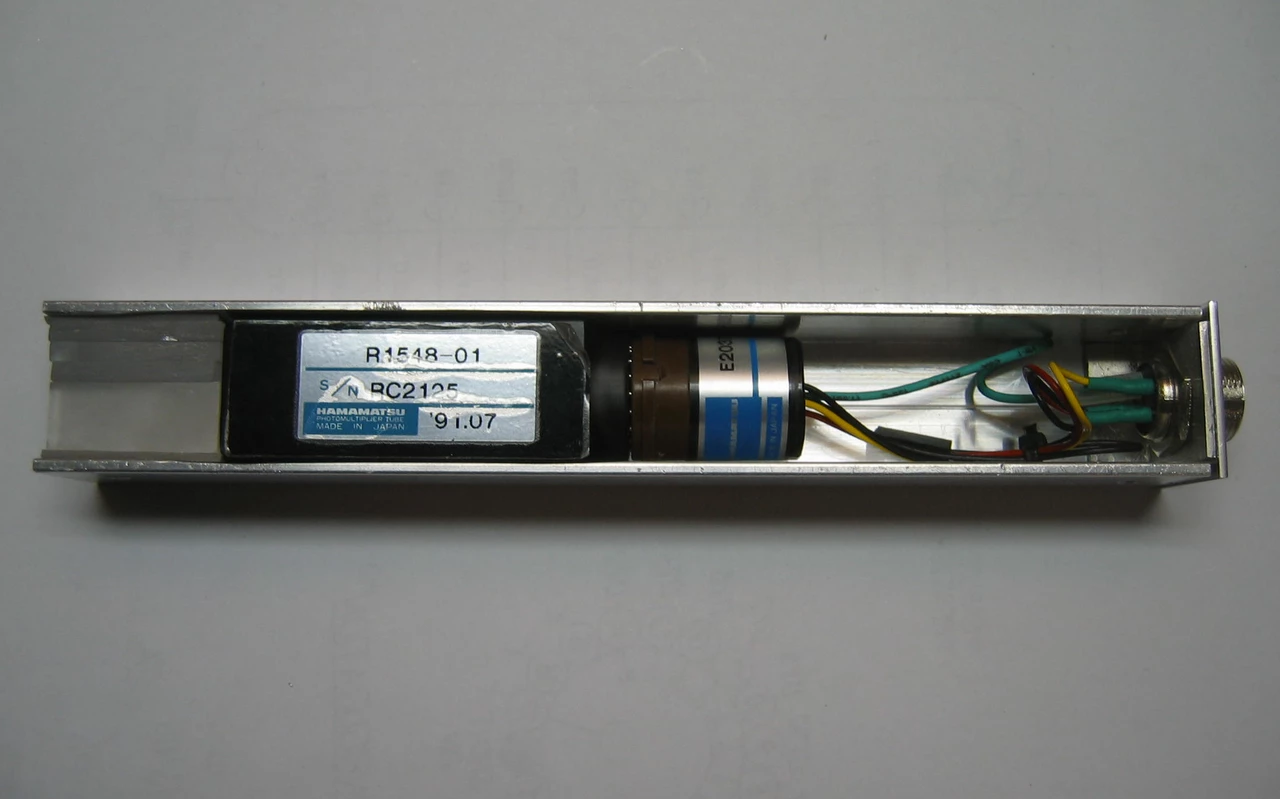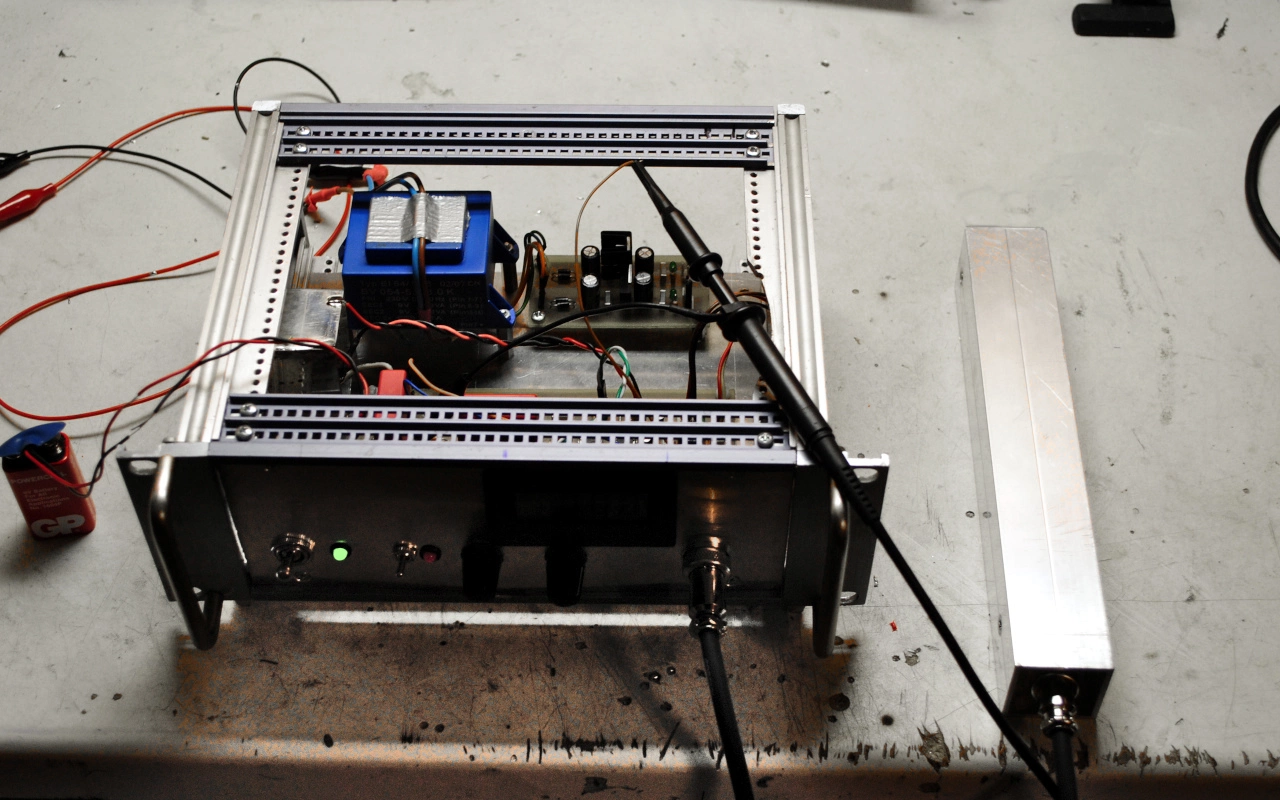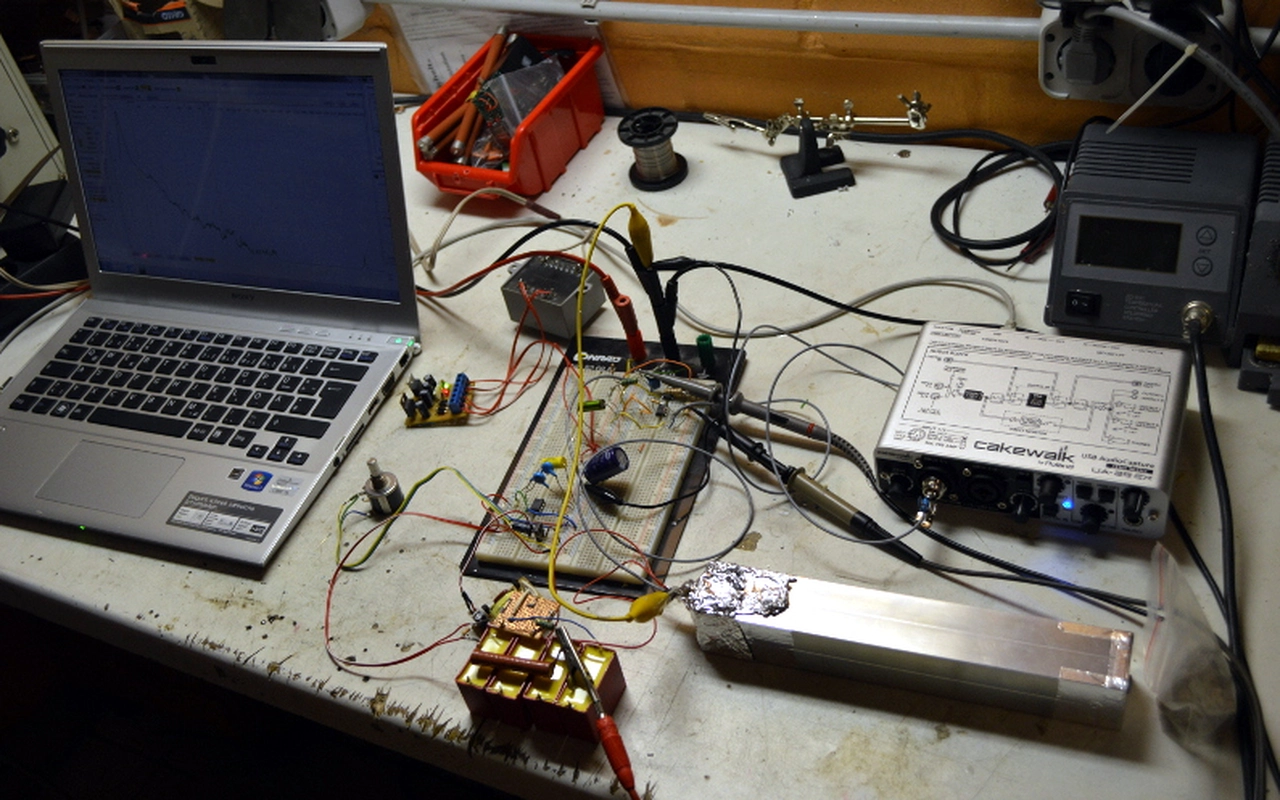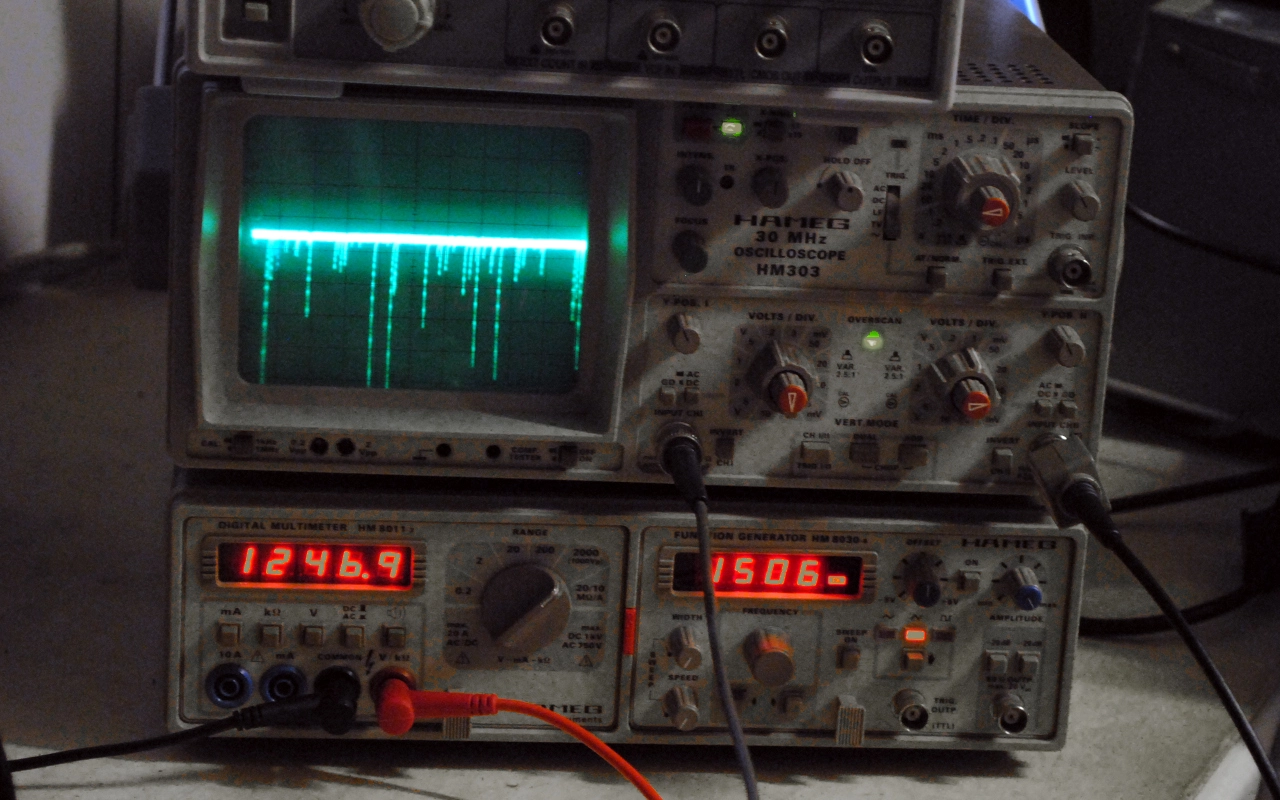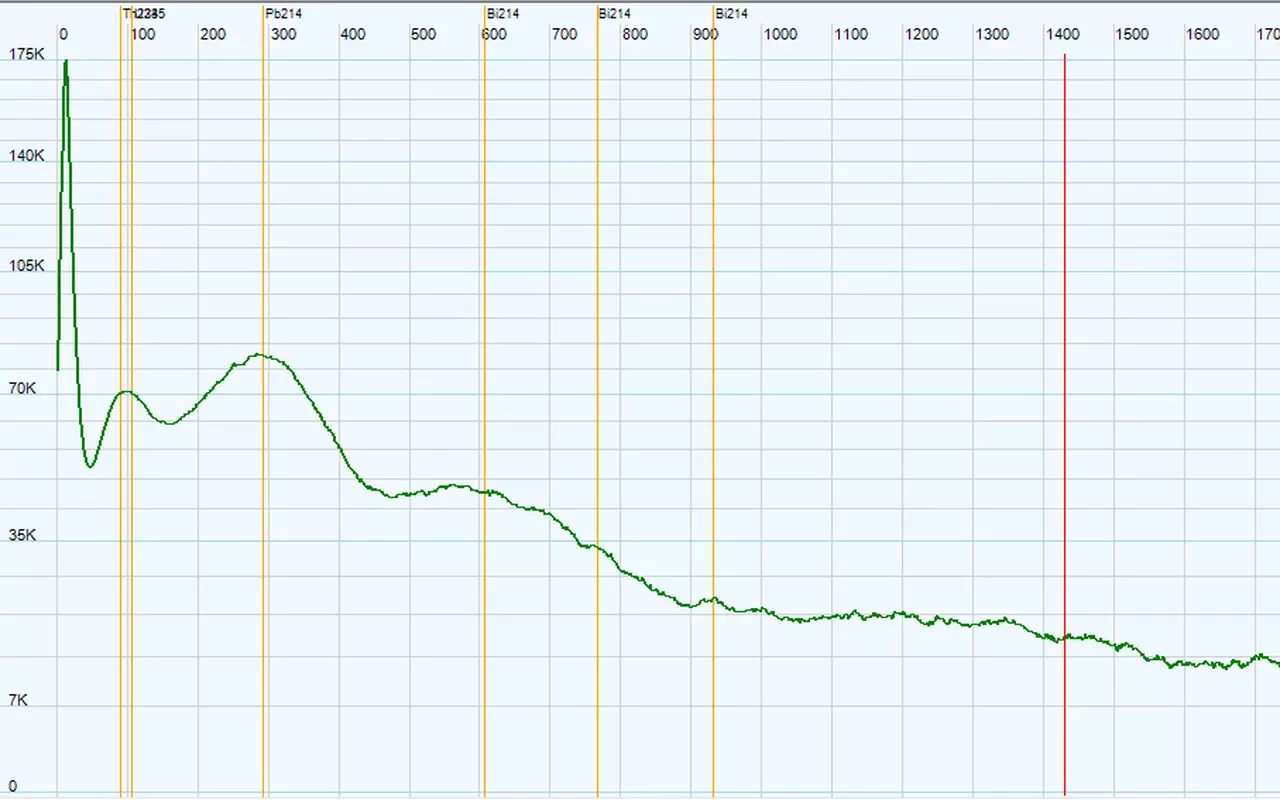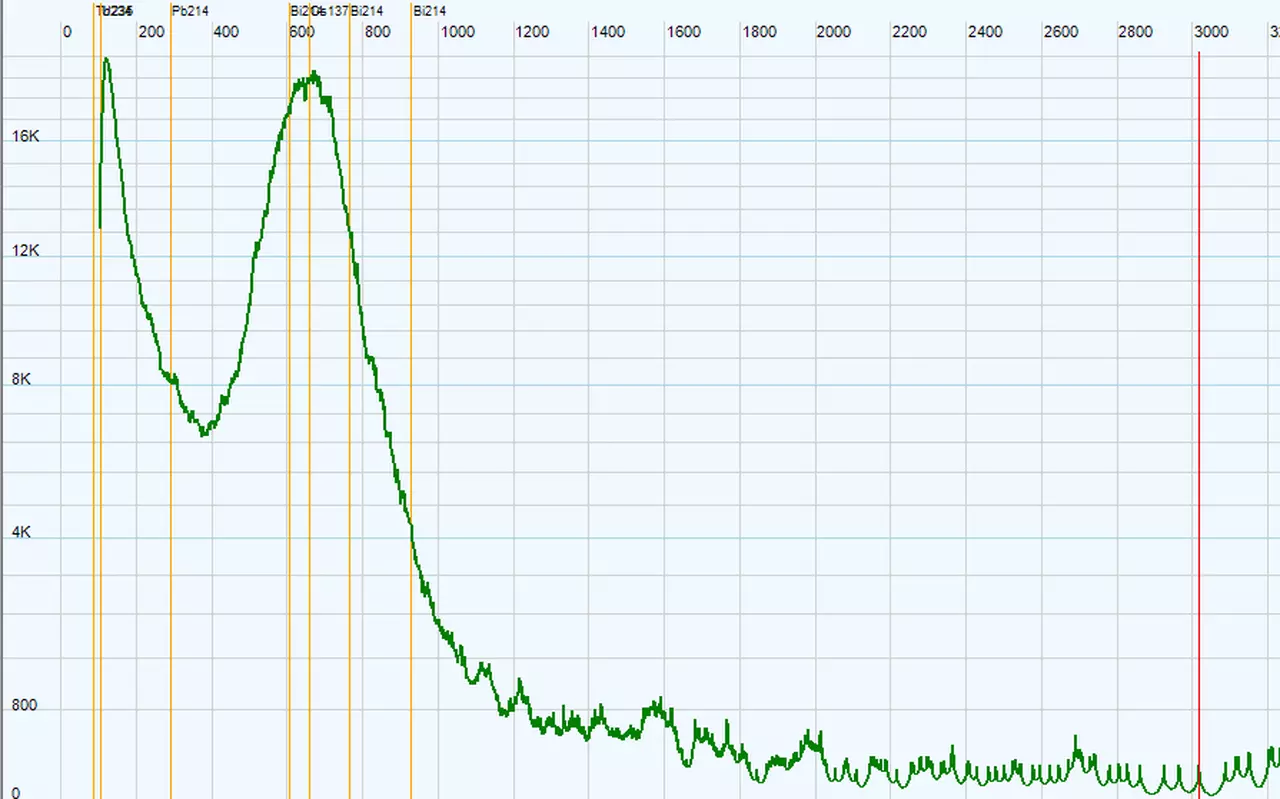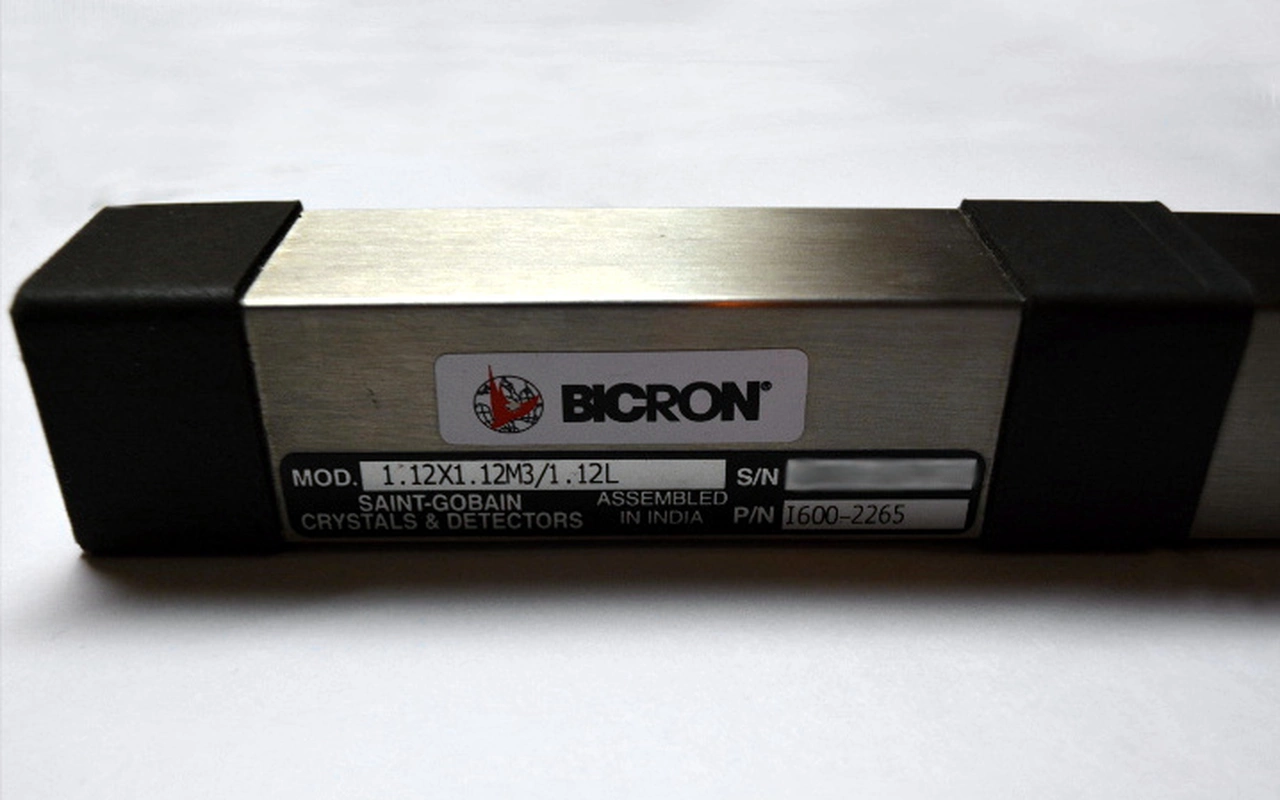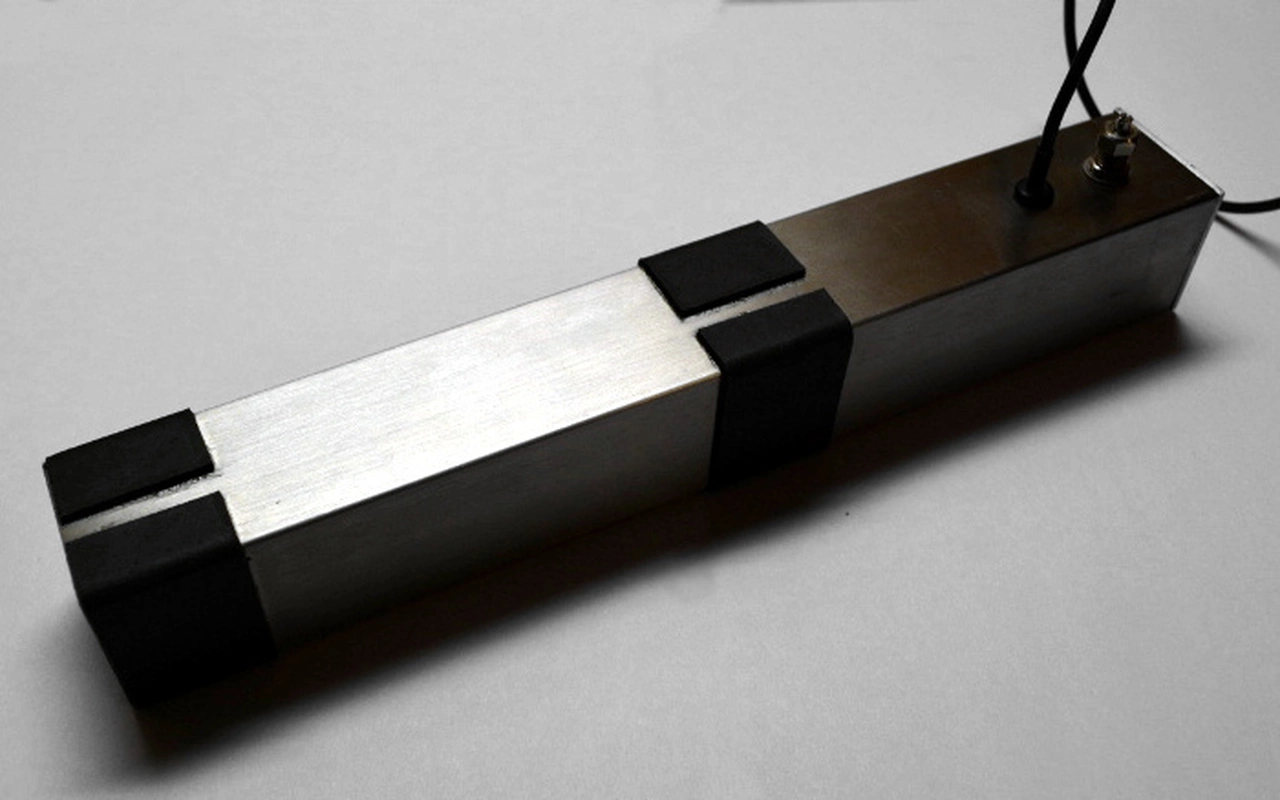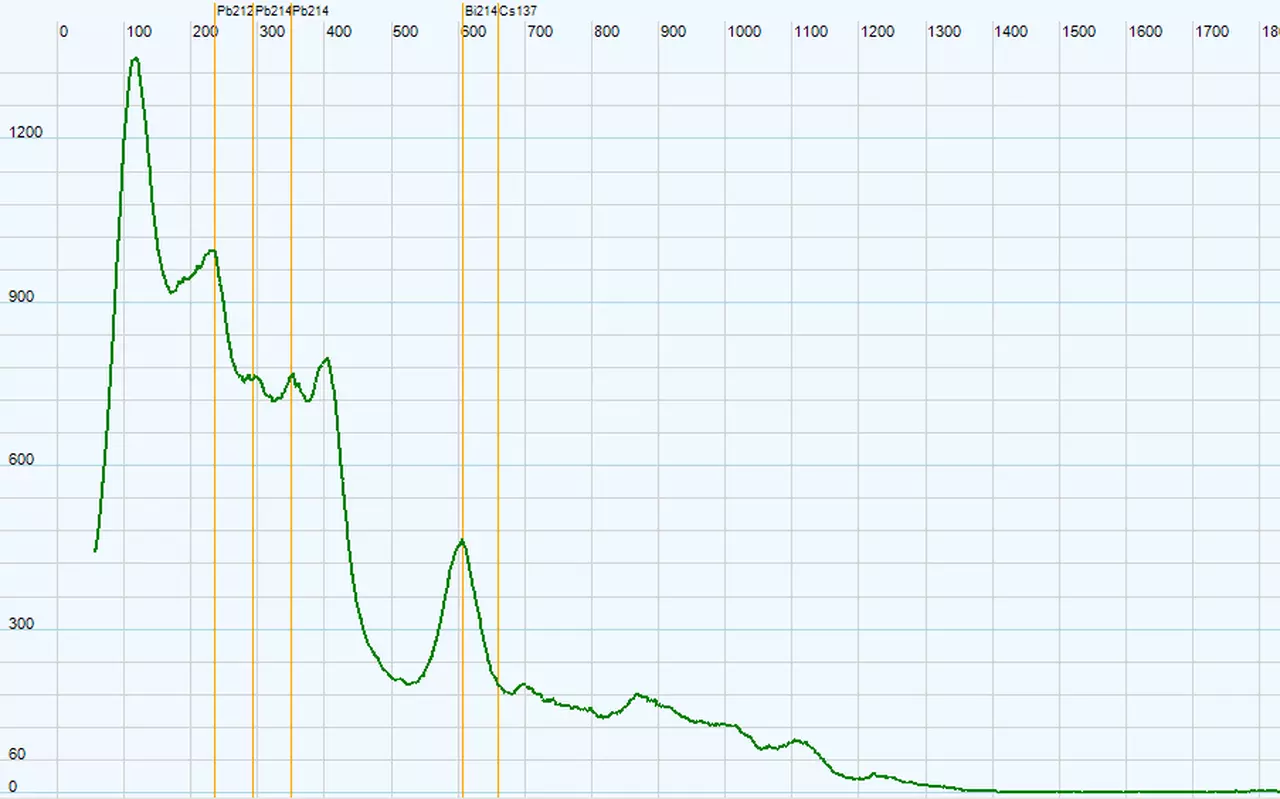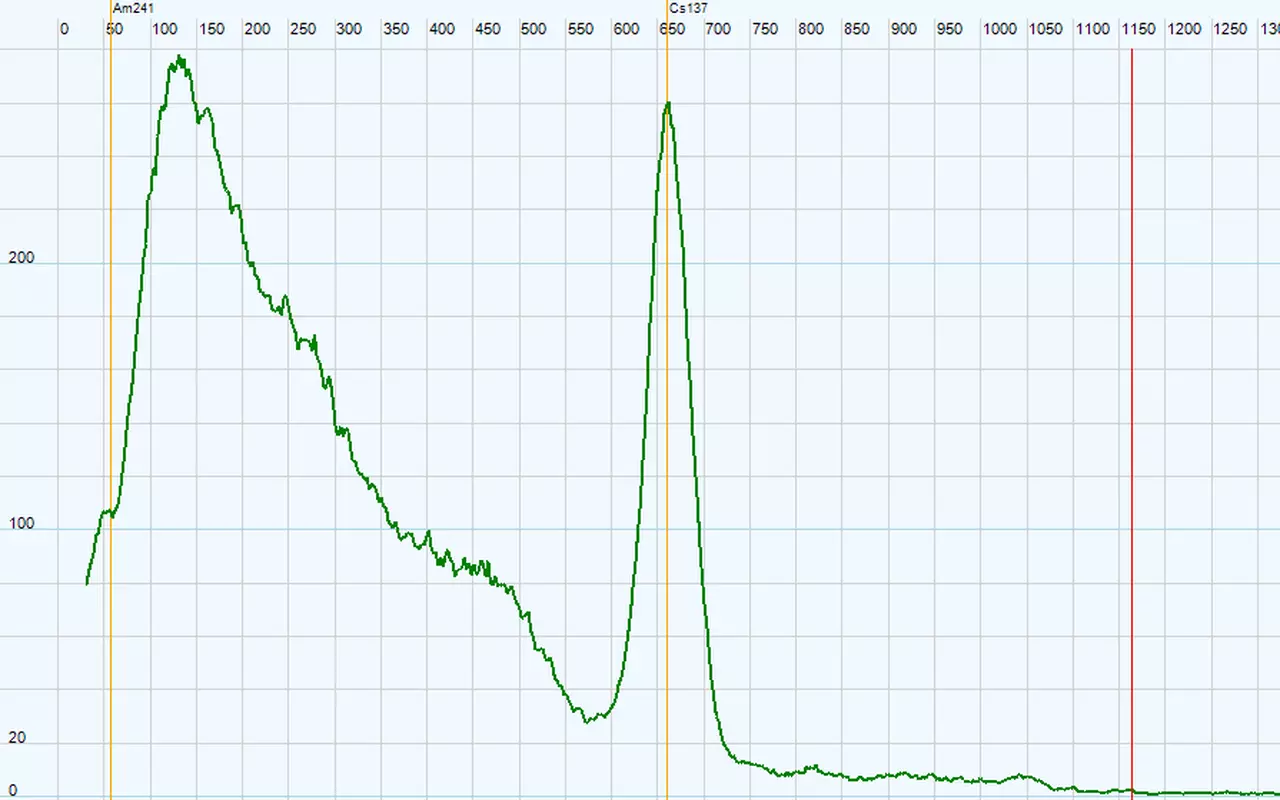Scintillation Detectors
A scintillation counter is a radiation detector that utilizes a special material, the "scintillator", to convert ionizing radiation to light. The resulting photons are then detected using a photo detector. Because the amount of photons generated during a scintillation event is dependent on particle energy, decay energy can be identified. This is very interesting, because decay energies are specific to individual isotopes allowing isotope identification.
BGO scintillator
I built a scintillation detector from scratch using Bismuth Germanate crystals as scintillation material and a Hammamatsu RC2125 photomultiplier tube for photon detection. The crystals were positioned at the photo cathode and optically coupled to the photo cathode. The tube and crystal were then mounted in an aluminium profile. The assembly was then mounted in an aluminium housing to block ambient light.
BGO scintillator spectra
I recorded a few spectra with this scintillator. Due to my quick & dirty setup the aquired resolution was not ideal.
NaI:Tl scintillator
I recorded much nicer spectra using the Bicron scintillator.
Power supply
A photomultiplier tube requires a high voltage DC power supply. Voltage ranges are usually in the few 100V to 1.5kV range. Photomultiplier gain is highly dependent on power supply voltage. If we want to measure decay energy, the supply voltage therefore has to be very stable. Power supply noise will also be present in the output signal and must be avoided.
In this design, a royer oscillator is used to drive a high voltage transformer for CCFL applications at resonant frequency. Two series 1st order low pass filters remove power supply noise and provide a clean supply rail. The output voltage is measured using a resistive divider and fed back through a P-D control element. Because the filters add considerable phase delay, a derivative signal is fed back from the rectifier output.
